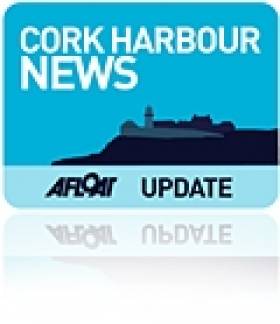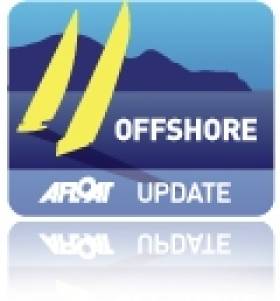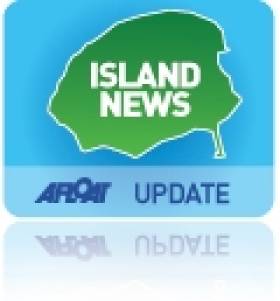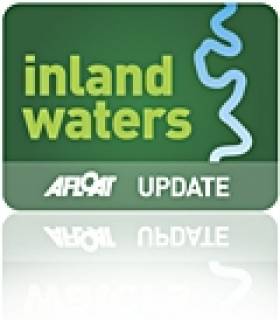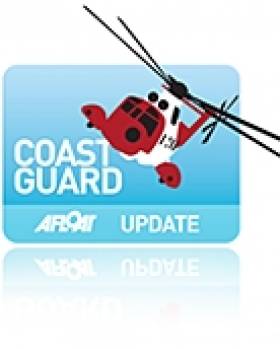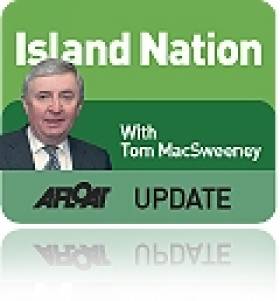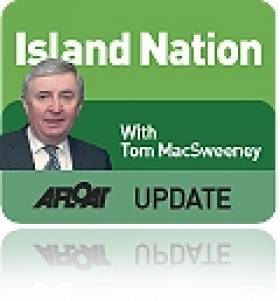Displaying items by tag: Island
#islands – As the current heatwave continues, who wouldn't dream of their own island paradise where there's cool water right on the doorstep, and you're monarch of all you survey? Well, such dream islands do exist, and some of them are very accessibly for sale. In this week's Irish Times, Brian O'Connell drew attention to four. (see page 1, Residential Property Supplement IT Thursday July 19th or click here.
#FERRY NEWS - A cross-border project to develop ferry services for island and remote communities of the Irish and Scottish coastlines has received funding in the sixth round of the European Regional Development Fund (EDRF).
A grant of £450,000 (€540,000) has been allocated to procure the world's first ever hybrid RORO ferry for operation in Scotland, following the completion of the INTERREG funded Small Ferries Project.
The project - a cross-border partnership between Caledonian Maritime Assets Limited and administrations in Ireland and Northern Ireland - produced common designs and procurement strategies for a fleet of small ferries which could be used to serve remote coastal communities.
As previously reported on Afloat.ie, five Scottish coastal routes (and three Irish routes) were examined as part of the Small Ferries Project report published in September last year.
Arising from this, Scotland will see the next step in the project by hosting the world’s first hybrid RORO ferry, designed for use on short crossing routes around the Clyde esturary and Hebrides.
The EDRF funding will also be used to develop the corresponding shore infrastructure to enable the ferry to recharge in port.
The first vessel is expected to enter service in Spring 2013.
In line with a Government decision the steering group comprising the Departments of the Environment, Community and Local Government, Jobs, Enterprise and Innovation, Defence and Public Expenditure and Reform will be chaired by Minister Coveney. The Office of Public Works (OPW) and Cork County Council will also have a pivotal role on the steering group.

Coveney – addressing thorny issue of Hazardous waste in Cork Harbour
The first task of the steering group is to oversee the preparation of an application for a licence to the EPA which will be submitted by Minister Coveney.
Minister Coveney said "I am delighted to be in a position to address this particularly thorny issue in the middle of Cork Harbour and I am looking forward to chairing the steering group established by Government which I am confident will find a suitable solution to this long running saga".
Some 16,000 sailors faced wind speeds of up to 28 knots and there were huge swells to contend with off the Needles and at St. Catherine's as the record-breaking fleet of 1,900 yachts undertook this most famous 50 nautical mile westabout Island circumnavigation on Saturday. A number of incidents were reported to the Coastguard, including 'Man Overboard' reports and capsizes as well as dismastings. There was a lot of sail damage across the fleet that ranged from high tech racers through to many smaller boats competing. However, a spokesman for the Race Management team at the Island Sailing Club, stressed that some of these incident reports were not attributable to the Race and were involving spectator boats rather than competitors.
Dave Atkinson, Assistant Principal Race Officer of the day said, "It was a successful race for the Island Sailing Club and we have received many compliments on running a great but challenging event. We're looking forward to welcoming competitors in 2012 for another record-breaking year."
Thousands of weary but generally happy sailors returned to Cowes and the marinas along the South Coast of England from mid afternoon yesterday, all feeling justifiably proud of their immense achievement in getting round the Island safely in tough conditions for even the most experienced and hardened sailor.
Nick Rogers, who usually sails a 470 with partner Chris Grube, helmed the Contessa 26 Sundowner to victory at the J.P. Morgan Asset Management Round the Island Race.
Line Honours went to French skipper Lionel Lemonchois and his 50ft multihull Prince de Bretagne who were first to cross the finish line in 3hrs 49m and 58s.
The final number of boats to cross the finish line in Cowes was 1,302 and there were 438 retirements and 16 DSQ (disqualified) and/or OCS (on course side).
The Race has become progressively more high profile as enhanced technology and communications has helped spread the scale and excitement of the Race farther and more widely around the globe. On Race Day, the total number of page impressions on the Race website amounted to 393,000 which is 100,000 up on 2010's site visitors. The Race Viewer, allowing online spectators to track boats of their choice, was downloaded by over 32,000 people. The interactive Race Progress Blog produced by the Media Centre and Race Control attracted 17,762 visitors over the course of twelve hours with appreciative comments coming in from as far away as Australia, the Philippines, Mexico and the US.
The Island Sailing Club look forward to welcoming everyone to next year's Race taking place on Saturday 30th June.
North Bull Island Springs to Life
Masters are requested by Waterways Ireland to give the parade a wide berth if not participating in it and to proceed at slow speed and with minimum wash when passing and to heed any advice offered by parade marshals.
Speaking today, Minister for Transport Leo Varadkar TD said: This invitation to Achill Coast Guard Unit is an acknowledgement of the life-saving work that this Unit (and indeed all our Volunteer Units) around the country are engaged in every day of the year. Every day, these people selflessly risk their own lives to save others in all weathers, day and night, often in very dangerous conditions. This invitation is in recognition of their work and is an indication of the high esteem in which our Coast Guard Units are held internationally."
Achill Island Coast Guard Unit is made up of 24 volunteers who carry pagers and are available on 15 minutes' notice day and night 365 days a year. In August 2009 the Unit took part in a search and rescue operation for a person who fell into the Atlantic Ocean while fishing off the rocks near Achill Island. In response to this incident, the Achill Coast Guard rescue boat was launched together with local RNLI Ballyglass Unit and the Sligo Coast Guard helicopter during very hazardous weather conditions. The casualty (a Mr. Patrick Williamson) who amazingly stayed afloat swimming in high seas for over an hour was successfully rescued and spent 5 days in intensive care following his ordeal in the sea.
On making a full recovery, Mr. Williamson nominated Achill Island Coast Guard Unit for a National Courage Award. Previous recipients of this honour include the Irish Army (for peacekeeping duties) and former Taoiseach Mr. Bertie Ahern (for his involvement in the peace talks in Northern Ireland).
Director of the Irish Coast Guard, Mr. Chris Reynolds today said: "The Achill Coast Guard Unit is well-deserving of this honour and I congratulate them on being part of this special event. It is a great recognition of the standard and quality of service the Coast Guard provide and I thank Mr. Williamson along with all who helped make this happen for inviting them to take part in this special event."
Will Election Promises Be Delivered On?
Fine Gael can, logically from the support which the party garnered in the General Election, be expected to dominate a Coalition Government. In that context, the question arises as to whether they will deliver on their pre-election manifesto commitment to re-establish the Department of the Marine?
The promise to do so was unequivocal, a clear undertaking that the situation created by the former Fianna Fail and Green Party Coalition which had decimated maritime issues by spreading them over several Departments of State, would be changed and all would be contained in one Department.
In the event of a Coalition being formed will we hear that "circumstances" have changed and adjustments must be made in the context of Coalition arrangements?
I had the opportunity to question Joan Burton of the Labour Party, one of the party negotiators, prior to the election at an event organised by the European Association of Journalists. She accepted that politicians had not paid enough attention to the marine sphere and said that this attitude should be changed and accepted that the nation could benefit economically as a result.
I hope that I am not being overly cynical towards politicians, born of long years of journalistic experience, in fearing that pre-election promises may be subjected to change.
• This article is reprinted by permission of the EVENING ECHO newspaper, Cork, where Tom MacSweeney writes maritime columns twice weekly. Evening Echo website: www.eecho.ieHow Many Times Do I Have to Say the Sea is Vital to Ireland?
Ireland has the largest maritime area-to-land mass in the European Union, but derives only 1% of GDP from the maritime sector. At a time when the economy needs every benefit it can get this figure is startling, particularly when compared to countries with other extensive coastlines, such as Norway where the figure is 20%, Denmark where it is 11% and even the UK which has increased its figure to 5%.
Despite being an island nation with a strong dependency on the sea, the Irish maritime economy is still in its infancy, both in terms of investment and of recognition.
Once again the importance of the sea was shown in the pre-Christmas weather problems. When air transport again failed the public, the ferries continued to operate. When road transport needed salt for gritting to keep roads open, it was ships which brought the salt to Ireland.
How many times do I have to challenge the ignorance and stupidity of the State, of Government, towards the sea? How many times do I have to remind the public of how dependent we are on the sea as an island nation?
Though still considered a low priority by Government, the maritime sector is worth €3 billion to the nation and supports 440,000 direct and indirect jobs. According to the Marine Institute in the "SeaChange Programme," this could be increased by at least 50%.
In Cork the Coastal and Marine Resources Centre which is part of UCC's Environmental Research Institute and has been working out of the Naval Base on Haulbowline Island has changed its name and is planning to move to a new maritime research facility. It has become the "Coastal and Marine Research Centre".
For over ten years the CMRC has been promoting the use of integrated coastal zone management as a means of achieving sustainable development in the use of coastal and marine resources, including marine ecology, seabed mapping, coastal processes, remote sensing, geology and geomatics.
A new maritime research facility is planned at Ringaskiddy, adjacent to the National Maritime College, part of the announced intention to establish a Maritime and Energy Research Campus and Commercial Cluster. The Department of Communications, Energy and Natural Resources, Bord Gais and the UCC Glucksman Foundation contributed funding, together with €7.5m. from the Higher Education Authority. As part of the National Ocean Energy Strategy, it will "bring together on one site the people, their ideas and the infrastructure to support the development of ocean energy," according to MERC Chairman, Peter Coyle. "Our aim is to produce innovative technical solutions to support the development of the Irish maritime sector."
This will include ocean energy opportunities, such as wave power where Irish companies have been leading the way. Shipping, logistics and maritime transport, marine recreation, maritime security research and maritime space applications are amongst other aspects of research work to be undertaken in Ringaskiddy.
Valerie Cummins, who led the Coastal Marine Resources Centre over past years has been appointed Director of MERC and is being replaced as Director at the newly re-named Coastal and Marine Research Centre by Jeremy Gault.
This article is reprinted by permission of the EVENING ECHO newspaper, Cork, where Tom MacSweeney writes maritime columns twice weekly. Evening Echo website: www.eecho.ie




























